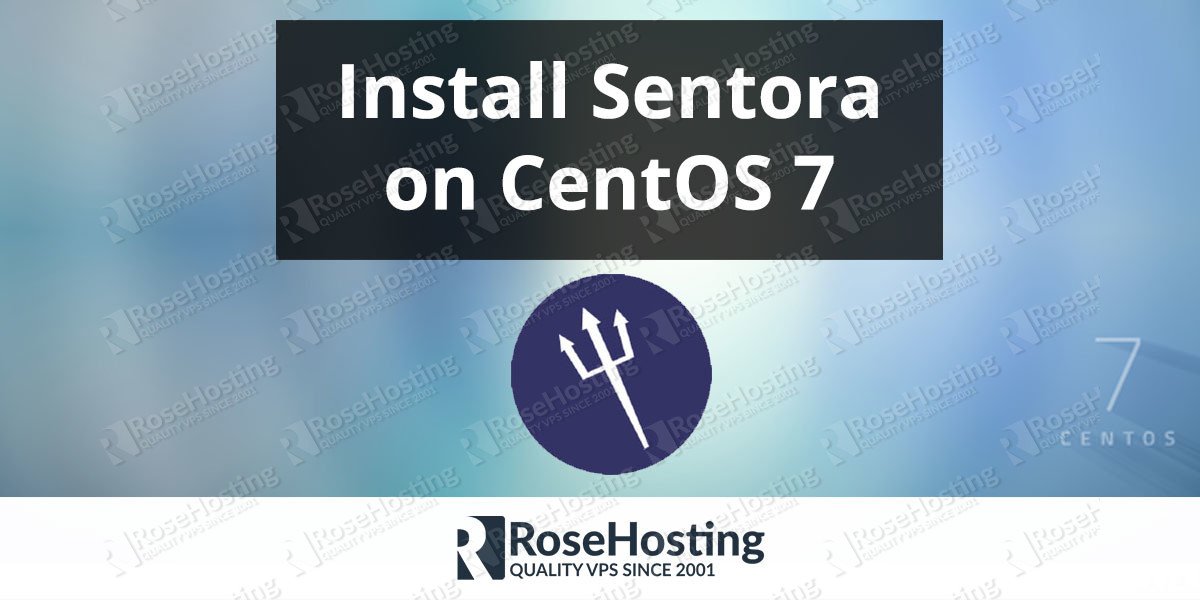In this tutorial we will cover the steps needed for installing Sentora on a CentOS 7. Sentora is a web hosting control panel that is free for download. It is developed for Linux, UNIX and BSD based servers or computers. Using Sentora software you can turn a domestic or commercial server into a completely developed, easy to use and manage web hosting server.
Sentora is written in PHP and it is designed to host and manage multiple clients on a single server. Sentora installs pre-configured packages that only work with control panel itself. Below is the list:
- MySql -5.5.29
- Apache – 2.4.3
- PHP -5.3.20
- Bind – 9.9.2-P1
- phpMyAdmin – 3.5.8.1 *
- RoundCube – 0.9.2 *
- Dovecot – 2.0.9
- Postfix – 2.6.6
- proFTPd – 1.3.3g
Therefore, a minimum installation of CentOS 7 is required if you want to successfully install Sentora.
Table of Contents
1. UPDATE THE SYSTEM
Log in to your Linux VPS as user root and first of all make sure that all packages are up to date:
# yum -y update
2. INSTALL SENTORA
Navigate to the /home directory.
# cd
Install the wget command line utility:
# yum install wget
Download the installation script:
# wget sentora.org/install
Make the script executable:
# chmod +x install
Start the installation of Sentora by running the script:
# ./install
You will be welcomed by the following:
############################################################ # Welcome to the Official Sentora Installer 1.0.1 # ############################################################ Checking that minimal requirements are ok Detected : CentOs 7 x86_64 Ok. DB server will be mariaDB
3. SETUP TIMEZONE
As you can see, our CentOS 7 VPS fulfills the minimal requirements by Sentora. Next, you need to select your timezone from the list:
Please identify a location so that time zone rules can be set correctly. Please select a continent or ocean. 1) Africa 2) Americas 3) Antarctica 4) Arctic Ocean 5) Asia 6) Atlantic Ocean 7) Australia 8) Europe 9) Indian Ocean 10) Pacific Ocean 11) none - I want to specify the time zone using the Posix TZ format.
After you set up your timezone, you will see the following on your screen:
=== Informations required to build your server === The installer requires 2 pieces of information: 1) the sub-domain that you want to use to access Sentora panel, - do not use your main domain (like domain.com) - use a sub-domain, e.g panel.domain.com - or use the server hostname, e.g server1.domain.com - DNS must already be configured and pointing to the server IP for this sub-domain 2) The public IP of the server.
What this means is that you must have a DNS propagated subdomain that you will enter after which you will be able to access the Sentora control panel by using that subdomain. The second information is the public IP address of the server.
For example, if you don’t configure sentora.yourdomain.tld the following error will stop you from continuing with the installation:
WARNING: sentora is not a subdomain! WARNING: sentora is not defined in your DNS! You must add records in your DNS manager (and then wait until propagation is done). For more information, read the Sentora documentation: - http://docs.sentora.org/index.php?node=7 (Installing Sentora) - http://docs.sentora.org/index.php?node=51 (Installer questions) If this is a production installation, set the DNS up as soon as possible. There are some warnings... Are you really sure that you want to setup Sentora with these parameters? (y):Accept and install, (n):Change domain or IP, (q):Quit installer? n
So, if you accept the settings without solving the warnings, Sentora will not work on your server.
Therefore, you must configure a working subdomain. The installation takes less than 5 minutes and after it is completed you will be prompted with the following:
######################################################## Congratulations Sentora has now been installed on your server. Please review the log file left in /root/ for any errors encountered during installation. Login to Sentora at http://http://panel.yourdomain.tld Sentora Username : zadmin Sentora Password : Ehj3qpNTkDciRJc3 MySQL Root Password : Nrj1xRKSGbDcodQX MySQL Postfix Password : tF0qEGTGvpXLyUEV MySQL ProFTPd Password : brrNJ6YS8FvD9vOP MySQL Roundcube Password : DEBRUAJSl4tdfJMS (theses passwords are saved in /root/passwords.txt) ########################################################
Of course, the above values are the ones that we got from our installation and are completely unrelated to your Sentora instance.
Congratulations, you have successfully installed Sentora on your CentOS 7 VPS.
By default, the Sentora login page is displayed when a user browses to the FQDN specified during installation (http://panel.yourdomain.tld), but also when the root domain name (ie http://yourdomain.tld) is opened.
So, open your favorite web browser and navigate to http://panel.yourdomain.tld.
For further configuration on Sentora please visit the official Configuration & How-to Sentora documentation.
Of course you don’t have to Install Sentora on CentOS 7 if you use one of our CentOS 7 Hosting services, in which case you can simply ask our expert Linux admins to Install Sentora on CentOS 7 for you. They are available 24×7 and will take care of your request immediately.
PS. If you liked this post please share it with your friends on the social networks using the buttons on the left or simply leave a reply below. Thanks.
